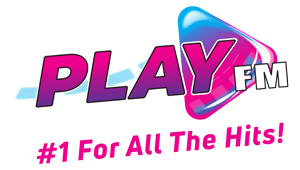Pete Townshend and Roger Daltrey weren’t the only ones feeling the weight of Sunday night’s historic return to Cincinnati. Nearly 43 years after 11 fans died outside a Who show in a stampede, the band’s longtime manager, Bill Curbishley, shared with Billboard that the concert that paid homage to the lives lost that night was “very, very emotional” for him as well.
“Firstly, the general feeling was one of emotion because of the many, many years gone by since then, so for all of us it was the closing of a circle in quite a few different ways,” Curbishley said the day after the band played a two-hour gig at TQL Stadium that was both a standard rock show and an extended, long-awaited whole-city hug.
“When I think about it — which I’ve been doing constantly for the last few days — so many people played a part in what happened and it was a very, very emotional night for us,” said Curbishley of the band’s first show in the Queen City since that fateful Dec. 3, 1979 night when the unimaginable happened.
He described guitarist/songwriter Townshend struggling to find the adequate words to say at the beginning of the show, then becoming more comfortable as it went on. Townshend approached the mic before the show-opening overture from Tommy and seemed poised to say something before appearing to get overwhelmed with emotion and stepping back, his eyes a visibly wet. About an hour later, though, Townshend finally found the words.
“I’ve been trying to think of what to say, what would be cool to say, what would be uncool to say, and really there’s no words that we can say that can mean (as much as) the fact that you guys have come out tonight and supported this event. Thank you so much,” he said to the capacity crowd as some fans shouted “we love you!”
And though he sent a very tender, thoughtful video, Curbishley also revealed that Pearl Jam singer Eddie Vedder was devastated that a COVID outbreak in his band had prevented the frontman from supporting his heroes with an on-stage vocal cameo as originally planned.
“Afterwards there was a pervading feeling of job well done and a sense of calmness that we didn’t really talk about,” Curbishley said of the long exhale the whole team took when the show was over. “Funnily enough, I was going to send Pete a note last night to tell him it’s the last time I’ll talk to you or Roger about Cincinnati and tell him a couple things. As they were walking to the stage he said, ‘Bill I know how many difficult decisions you had to make that day,’ and I thought, ‘you don’t know how many!’”
Among the thoughts Curbishley was going to share in his unsent note to Townshend was that he never told the band that night in 1979 how many people were injured and dying on the plaza as the Who took the stage to play what the band described as one of the best shows of that year’s North American tour. “He never realized the scale of it because he never saw it,” Curbishley said of Townshend, who, like the rest of the band, was not told about the horrific scene outside until after they left the stage. “So the last words on this is that we memorialized it, had a musical service as such and now it’s done.”
All night long on Sunday, a video ribbon around the soccer stadium displayed the names of the dead, who ranged in age from 15-27 — Stephan Preston, Jackie Eckerle, Karen Morrison, Walter Adams, Jr., Peter Bowes, Connie Sue Burns, David Heck, Teva Rae Ladd, Philip Snyder, Bryan Wagner, and James Warmoth — and the evening opened with a set from a local band made up of two local alumni who attended the 1979 show as well as the local high school that lost three beloved students that night. The band also displayed giant images of each fallen fan on video screens before the night’s encore.
Curbishley was the one who had to make the unimaginably hard call to continue the 1979 show after learning that there were injuries and likely a number of fatalities among fans who had been trampled when thousands attempted to enter the old Riverfront Coliseum through the only two doors open before the concert. And while the band left town that night and stayed away for four decades, he said that there was a “huge” sense of relief when they came back this weekend due to the outpouring of love and emotion they got from their Cincinnati fans the moment they touched down.
“Some of the letters I got were just incredible and the coming back [to the city] was something that sat with us unspoken for many years,” he said. The hours leading up the show made for a “very long and humbling” day for the veteran rock manager, who met with the city’s mayor, Aftab Pureval, to receive an official proclamation about the band’s return. “I was left a bit embarrassed when he said, ‘You did so many great things on that day,’” Curbishley said, before adding that another person he met this weekend confirmed that his in-the-moment call to continue the show to avoid having an even more disastrous scene outside the Coliseum was the right one.
That man was Cincinnati Police Lieutenant Dale Menkhaus, who agreed with Curbishley that night that the right thing to do was tend to the wounded and dead rather than allow the thousands of fans inside to rush out onto what was a chaotic scene that drew every EMS and police officer in town. “I realized that talking to me was a cathartic exercise for him, it was therapeutic in the sense that he was talking to someone who was there and also that he’d been struggling for years with what happened that night,” said Curbishley. “He’d suffered as well.”
During Sunday’s show, the band looked out at hundreds of yellow T-shirts worn in the front rows by fans from nearby Finneytown, Ohio, who were there to pay tribute to three classmates who died. Energetic drummer Zak Starkey repeatedly pointed to his own yellow version of the shirt promoting the P.E.M. Memorial Scholarship Fund — founded in 2010 to memorialize the three Finneytown students.
Curbishley shared with Billboard that the concert — which took place on took place on May 15, an appropriate date for the ripping run through the Quadrophenia track “5:15” — had raised $515,000 for the P.E.M. Fund, meaning that it can be expanded from 3 to 11 scholarships for Finneytown students interested in pursuing degrees in the arts or music.



